
Peak Hopping
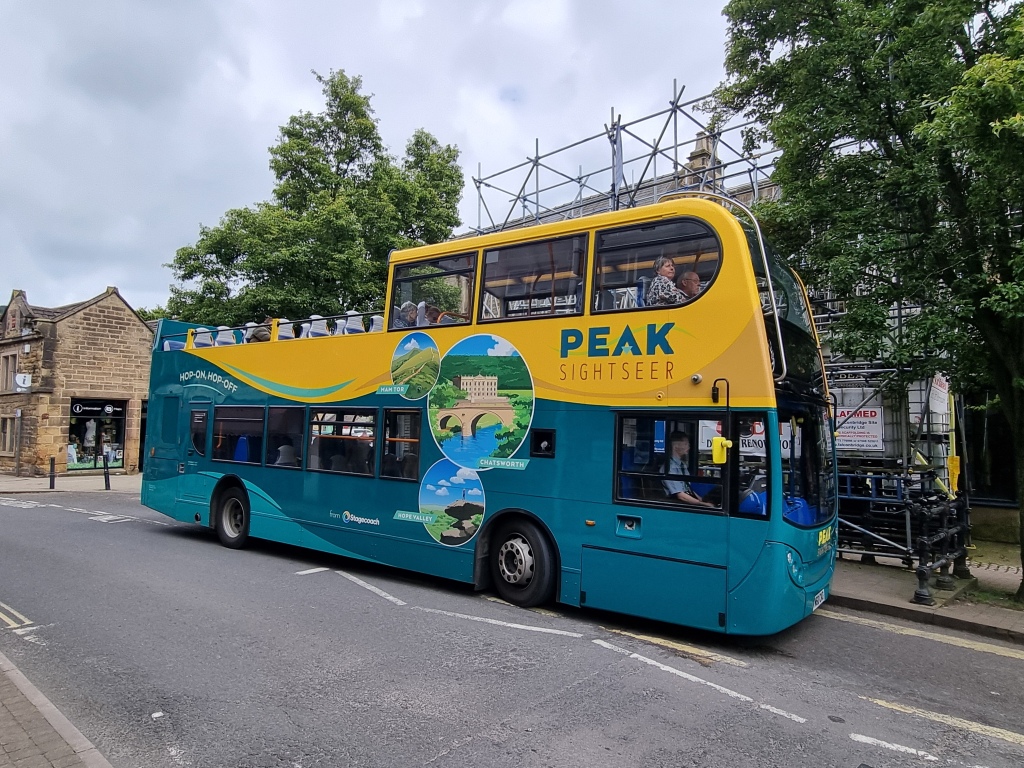
Who doesn’t love open-top buses? Well, you could argue that the great British weather can create variations on the responses to that question. Stagecoach, however, hit upon a bit of a gem last summer. Using a wad of Bus Service Improvement Plan cash innovatively, they created an open-top service around parts of the Peak District, with the laudable aim of allowing car-free access into this beautiful part of Britain. Chatsworth House and Bakewell were hubs of this excellent offering. I sampled it – it was wonderful.
This year, those wily Stagecoach folk are back – with something even better: a second route, adding even more to see, accompanied by a stunning Stenning livery (that sent my spell-check into overtime) and a beautifully-designed leaflet to whet your appetite.
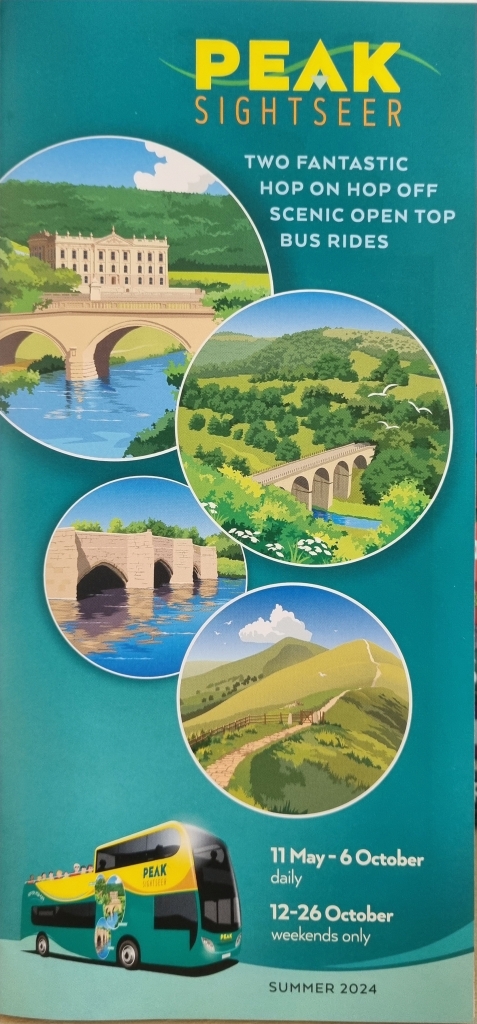
Three of us ventured north, including my bus driving pal Mark (thankfully not wearing his shorts) and our other friend Paul – more of a tram/rail guy but can be tempted by the odd bus. It’s a bit of a “Last Of The Summer Wine” combo.
We gather at the giant monolith that is Birmingham New Street station. There are STILL people having selfies in front of the giant bull. I think the entire world population has now visited this thing at least twice. Our first port of call is Burton on Trent. I fumble with the self-service ticket machines and grumble like a typical 50-something man of my age about how much of a rigmarole buying a ticket has now become and how much easier it could have been if only I could have bought a ticket from a human sat behind a desk. Which of course I could have done if I’d just glanced left….
We’re heading to Burton as this is where the validity of the Derbyshire Wayfarer rover ticket begins – a marvellous product that covers the whole of Derbyshire as well as extensions down to Burton and up to Sheffield. Mark has previously discovered this product as a bargain compared to buying a CrossCountry rail ticket on the day from Brum to Sheffield. Split ticketing may of course reduce this cost, but who wants to faff? I need to max-out my bus-loving life before the King sends me his telegram.
So a Burton return from the city leads us to this part of Staffordshire, once famous for it’s brewing. Info on Derbyshire County Council’s website lists where you can buy this ticket, although my old mate Charles in the ticket office back at Stourbridge Town tells me he could issue it there – a trick for the future….
Burton station is a spartan, although perfectly functional, affair. Me and Mark obtain a family ticket for £27.70 (£15.40 for 1 adult), Paul going for the bargain £7.70 concessionary pass holder version. These are valid all day on virtually all buses and trains in Derbyshire. There is also a bus-only version. I am delighted to grab some attractive paper timetables for local Diamond bus services. Buses in Burton are now predominantly provided by this Rotala-owned company, having purchased the Midland Classic operation from owner James Boddice – a truly superb independent operation in it’s day.
We have 40 minutes before our train to Derby. I ponder the quirky fact that Burton station is operated by East Midlands Railway although none of their services stop here. I also lament the seemingly permanent switching off of the real-time bus information screen within the station. As Mick Jagger once warbled, “you can’t always get what you want”…… We wander down to Sainsburys for snacks and observe the mix of old red/yellow Midland Classic livery and the ever-increasing Diamond blue. TrentBarton also come here with their “Villager” service to Derby.
Now we’re on the short-hop to Derby on CrossCountry. Here we change to a Sheffield-bound service we’re soon in the steel city. A quick hop across the road to the large Sheffield Interchange leads us to Hulleys 272 for an hour’s jolly romp down to Castleton. Mark has an inkling that this wonderfully-scenic bus service has a double decker on it, but we are a tad disappointed when a single deck Enviro 200 rolls into play. Only a handful board here, but significantly more at stops leaving the city, so as we climb out of the urban sprawl into the Derbyshire countryside, our bus is pretty much full. Young American accents fill the air as visitors from across the pond eventually leave the service in the greenery.
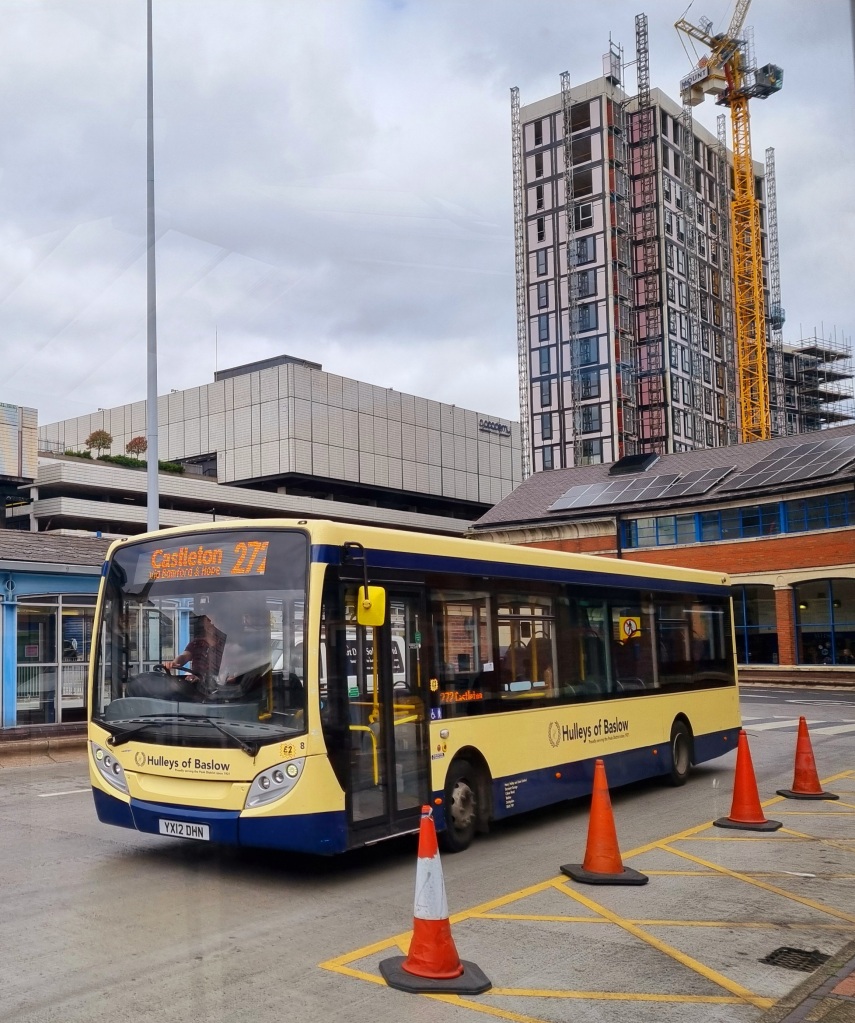
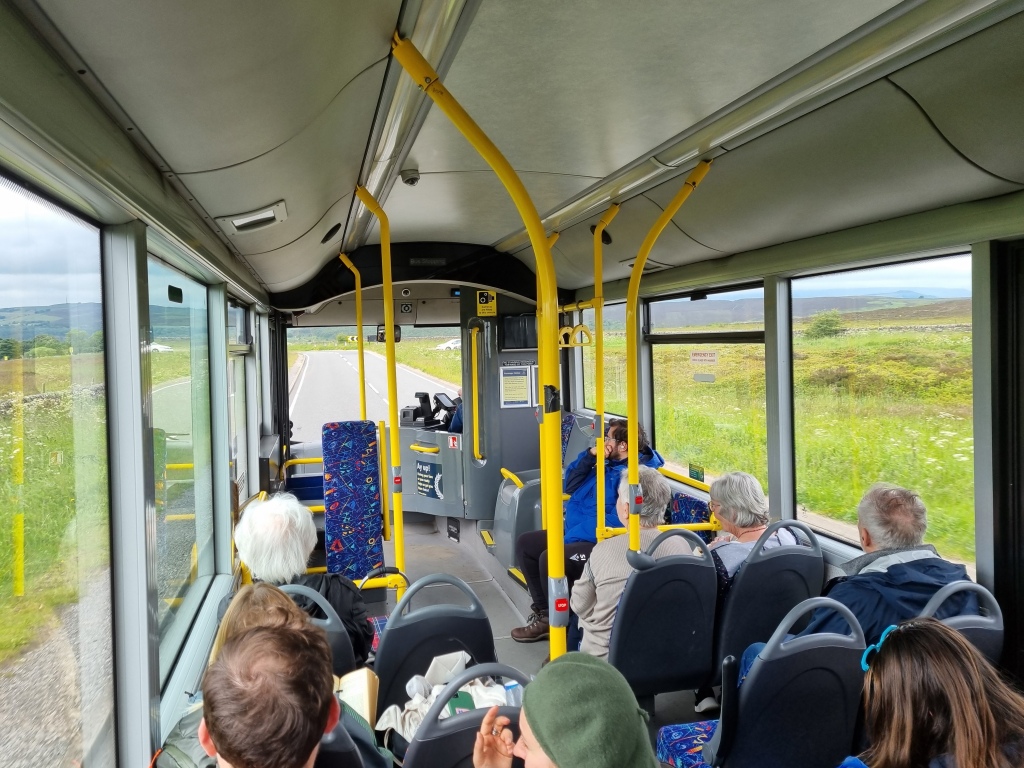
The journey through Hathersage, Bamford and Hope grows increasingly spectacular. Just over an hour later, we arrive into Castleton “Bus Station”. These are my inverted commas. Castleton’s “Bus Station” is possibly the smallest I have ever seen! We pull in behind an open-top Peak Sightseer and the two vehicles render the facility full!
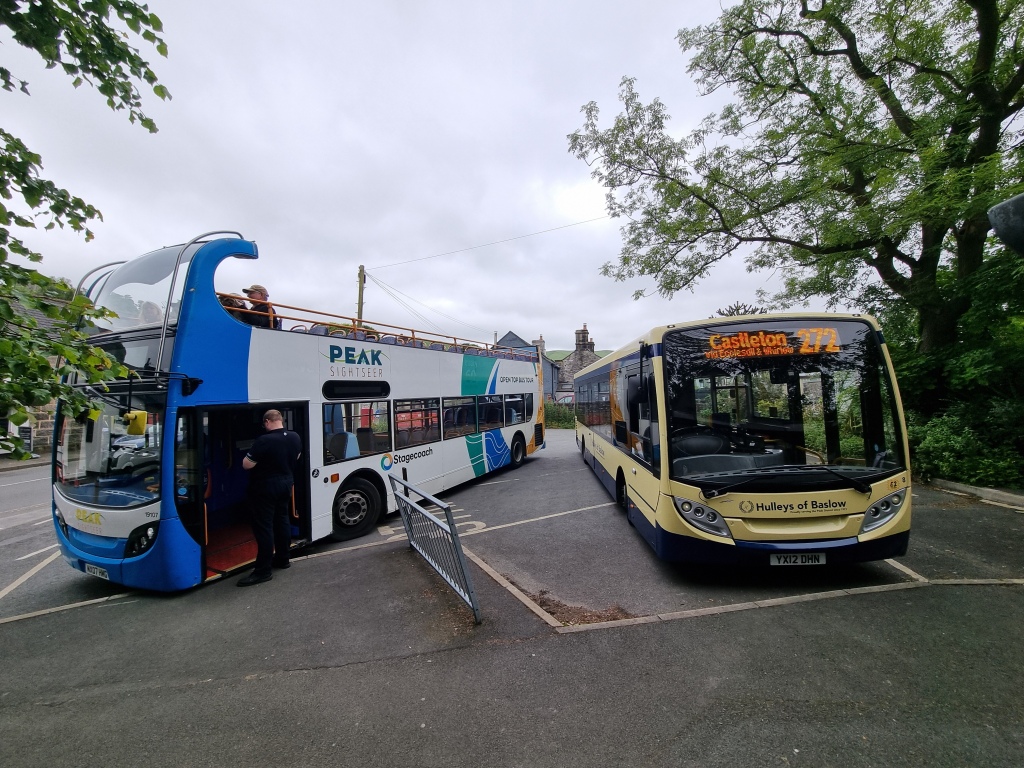
We don’t immediately board the open-topper as we have eyes on both the pub and the bakery. I take pics of the quirky bus station before heading to Ye Olde Cheshire Cheese Inn, where the excellent selection of 80s tunes playing discreetly in the background in no way compensates for the second mortgage required for three pints of ale. The bakery up the road barely copes with the three of us ordering various savoury delights and clotted cream ice creams. A queue has formed behind us, possibly for the first time since the mid-80s. The locals must wonder what is going on….
And now the main event of the day: The Peak Sightseer! The service is a couple of minutes late. Our driver doesn’t attempt the awkward turn into the tiny bus station (due to awkwardly-placed roadworks) but instead beckons us to the side of the road. He seems impossibly happy. And who wouldn’t be, driving buses in this beautiful part of the world? All day tickets have gone up in price this year, but there are two routes to enjoy and it is still great value at £9.50. We even obtain a discount by flashing our Derbyshire Wayfarer, which brings the price down to £5.50, which is the same amount Paul pays with his concessionary discount. Incredible value.
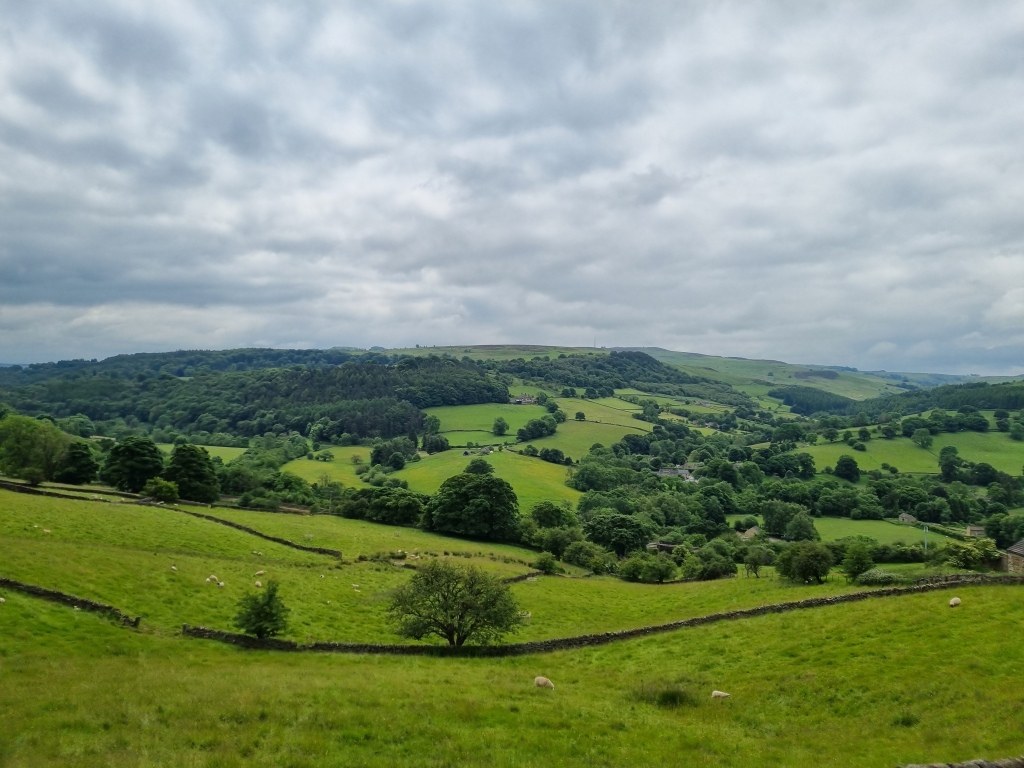
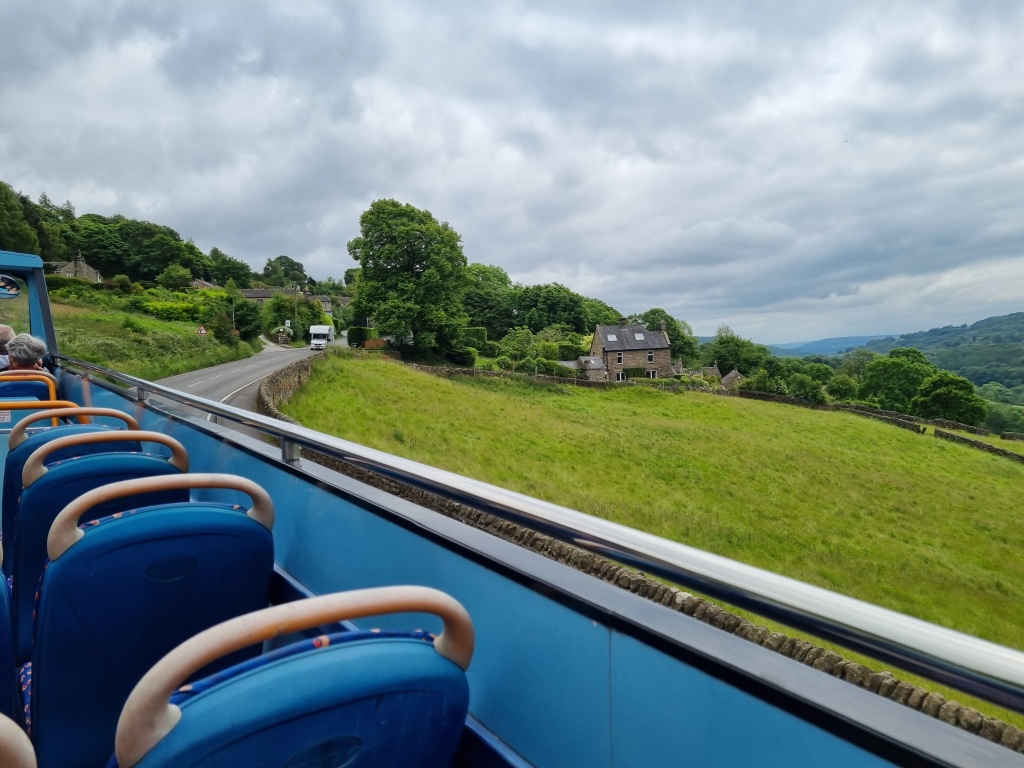
We’re off! It’s blustery up top but wonderfully panoramic as our “Blue” route initially retraces our steps on the 272 through Hope and Hathersage, before dropping down to Padley Gorge, Grindleford, Froggatt Wood, Baslow (home of the aforementioned Hulleys) and Nether End, constantly hugging the River Derwent before the dramatic and spectacular arrival at Chatsworth House.
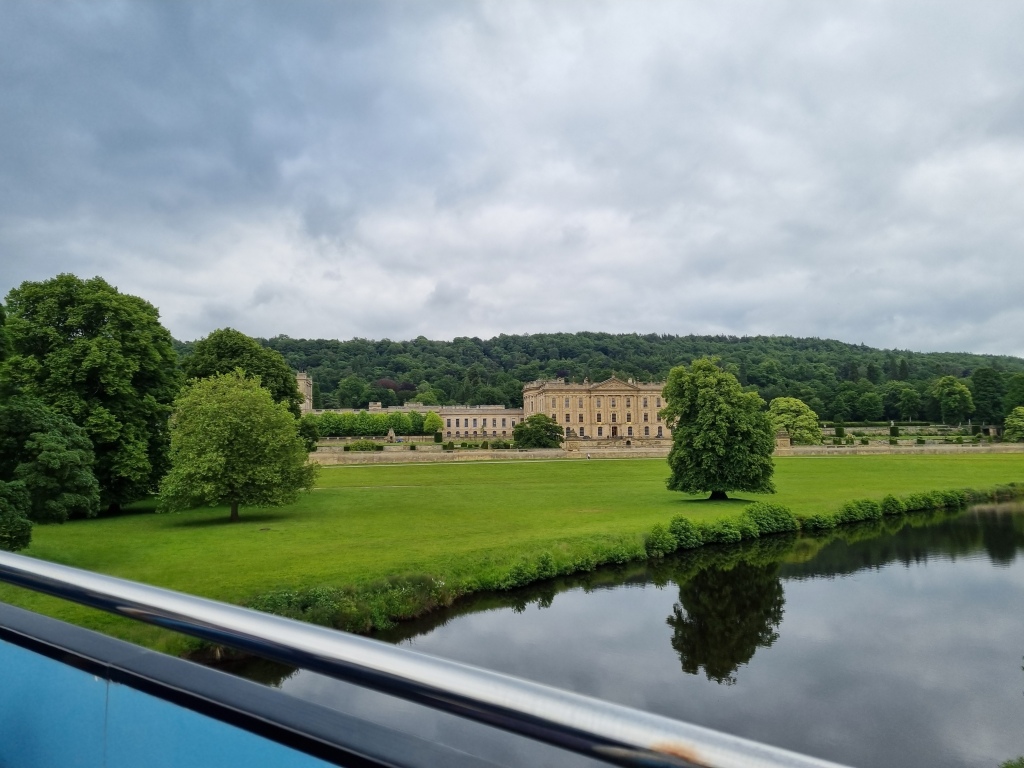
It’s a busy day and the car parks appear full. There is a small bus terminus here (this can’t be considered a bus “station” – it’s even smaller than Castleton!). We bail out and our friendly driver disappears with his trusty steed. Within moments, another Peak Sightseer appears – this time in full impressive livery. This is the original “Red” route towards Bakewell. There’s a few minutes before departure, so whilst the masses head for their stately home fix, we head towards a line up of private hire vehicles parked up. That’s what bus enthusiasts do! Notts & Derby are here with two deckers and there’s another Peak Sightseer lurking.
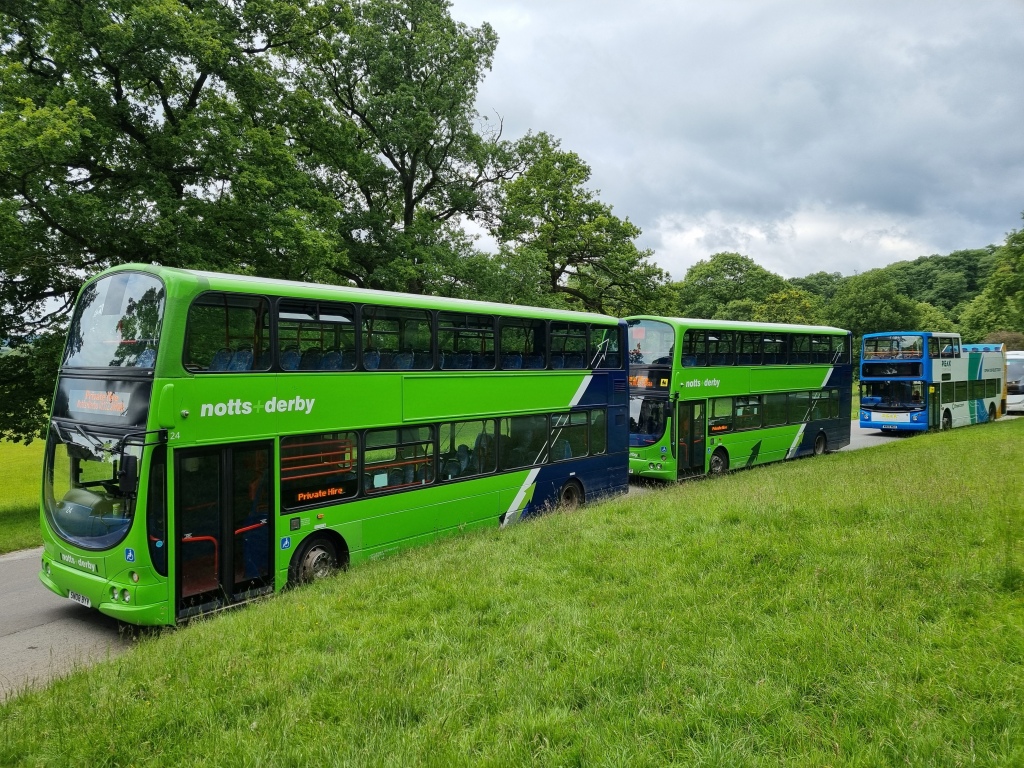
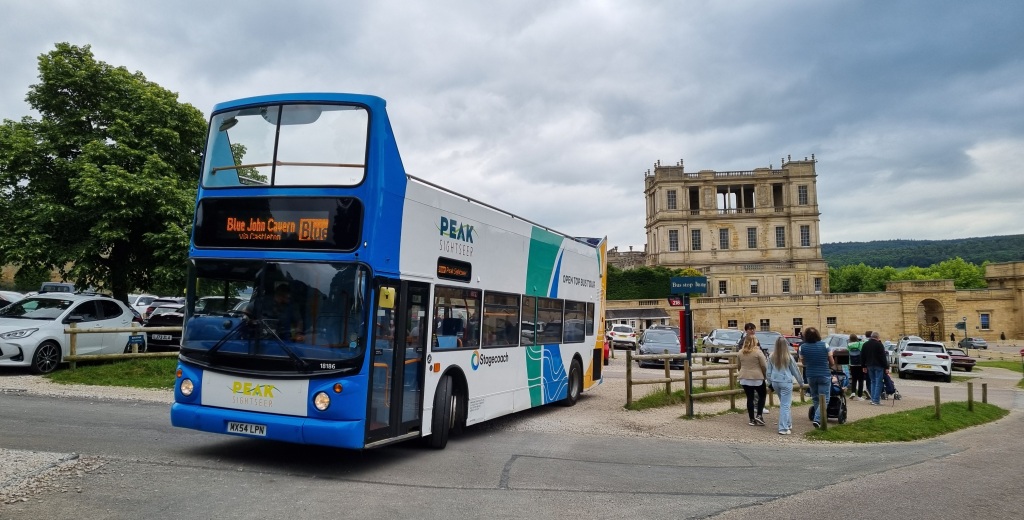
Pictures obtained, we board the newer open-top Enviro 400. Our driver here is also super-friendly and looks as if he’s thoroughly enjoying himself. This service also has a recorded commentary, pointing out places of interest along the way. We pass through Pilsley, home of the Chatsworth Estate farm shop, then bear left at Hassop station, where the old Midland Railway London to Manchester line has been transformed into the Monsal Trail – an 8.5 mile scenic walk – before heading into the town of Bakewell. We bail out here, although the route then becomes a circular back to Hassop station via Ashford in the Water and Thornbridge Hall.
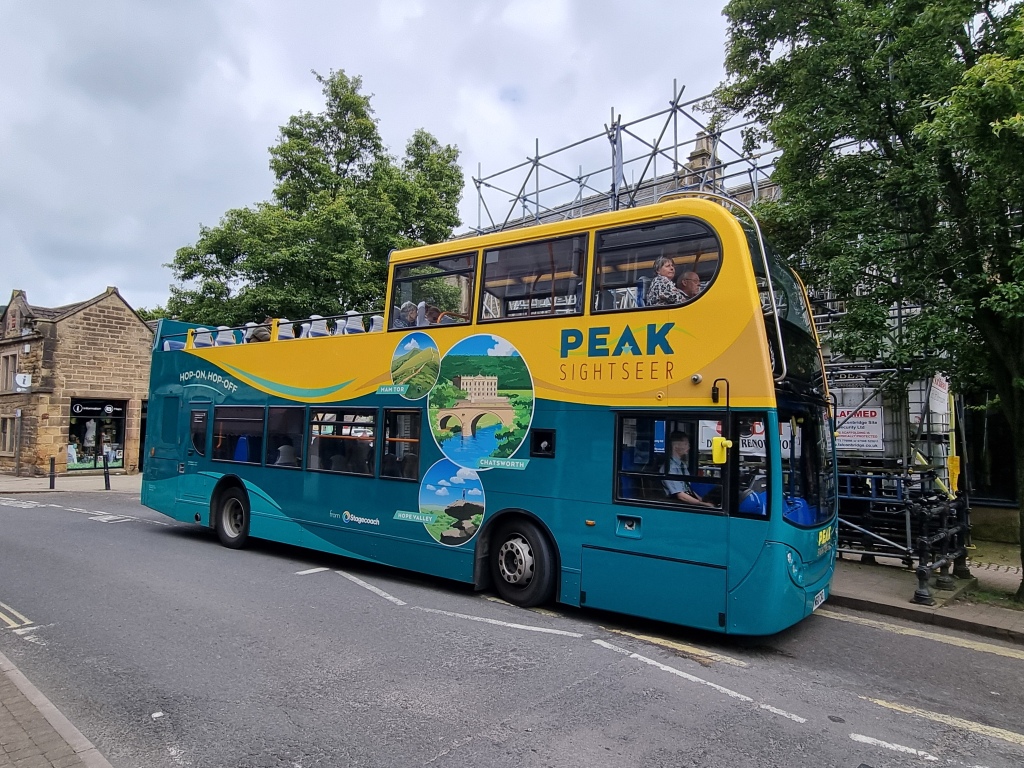
When in Bakewell, you have to eat Bakewell Pudding! It’s the law! I get embroiled in a Twitter pile-on after apparently mistaking my Pudding for a Tart. Hey – it’s an easy assumption to make. I’ve probably been cancelled forever by the historians of Bakewell for that faux pas. Mark decides to supplement his Pudding with fish and chips.

Now we’re Derby-bound. Our agreed next step will be the TrentBarton 6.1 route – the only company I know of to number their services with a decimal point. There is some confusion at the stop, as TrentBarton’s information is different to the Council’s and bustimes online. It is all irrelevant as the supposed departure doesn’t appear and the real time information is stubbornly stuck on “24 minutes”. It briefly drops down a minute, then adds two. The ever-growing queue quietly tuts. I decide to tweet TrentBarton, but my mobile signal is very poor. I eventually get a message out and they reply after a few minutes to helpful tell me that the vehicle has had an overheating problem. Although the countdown begins to fall, we decide on another option – the incoming Hulleys 172 to Matlock. This is a round-the-villages offering but only has a handful of departures per day, so being the bus nerds that we are, decide that it is nevertheless worth the punt.
It’s full of school kids. Paul manages to find a seat, but me and Mark initially stand, although two kids heroically offer us seats – maybe I’m looking increasingly in need of one…..
This is an unexpected jolly romp around country lanes and chocolate-box villages, although our driver narrowly avoids disaster with a truck at one stage. Experience surely counts!
We finally arrive into Matlock bus station. I shudder. This lovely part of the world deserves far better than what looks like some sort of dingy lorry park for bin waggons. We’re a bit pressed for time, so don’t hang around, but I intend to return to explore just how unappealing this facility is.
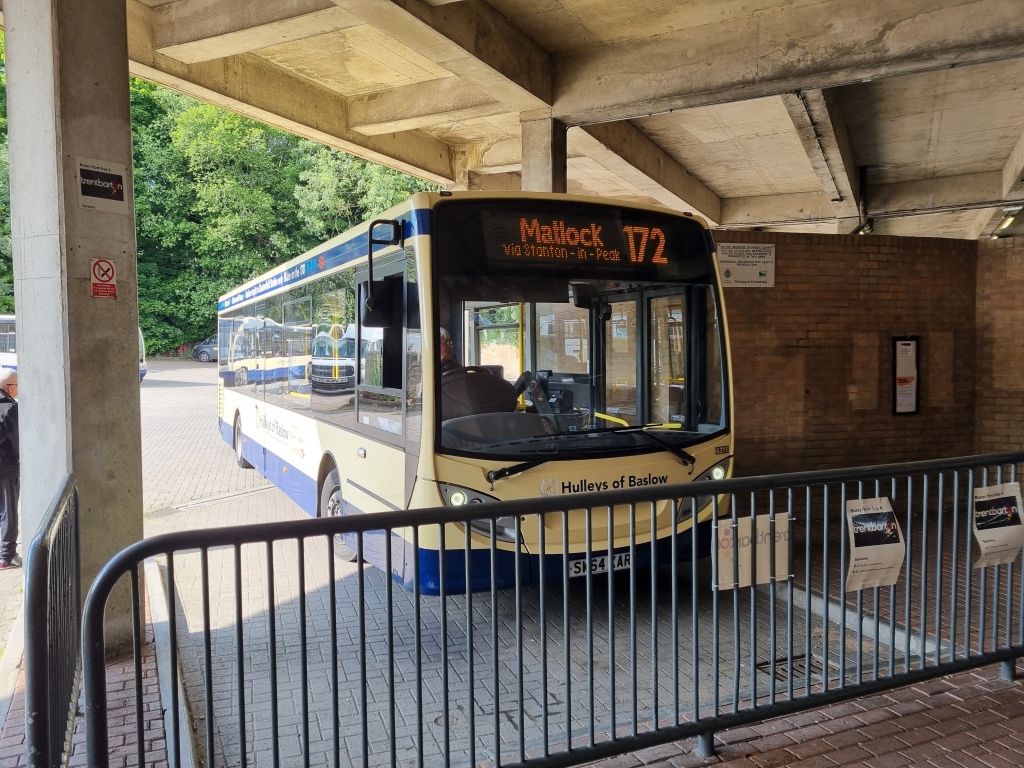
Matlock has scary memories for me. Myself and a friend came here around six years ago and decided to take a ride on the Heights of Abraham – a spectacular cable car ride. However, I appeared to have forgotten my fear of heights until ensconced in one….
Matlock railway station is far more appealing. It hosts the preserved Peak Railway, as well as the National Rail service to Nottingham via Derby, which we hop on. The unit is an “old friend” – the green seats reveal its former life in the West Midlands as a class 170. It is now living out it’s operational life in more picturesque surroundings. The journey back to Derby calls at Whatstandwell – another horror story for myself, with memories of the time I decided to visit Crich Tramway Museum and climb the hill from Whatstandwell on what was a particularly warm day! Let’s just say never again! It did provoke a discussion about how a bus link from Whaststandwell station up and down to Crich would possibly encourage more rail-based visits to this outstanding museum. Bus access is infrequent, so you really have to visit by car.
Back in Derby we observe another law – if time allows, you MUST have a pint in the Brunswick near to the station. Which we did. And a chip butty off the menu.
Finally, a trip from Derby back to the bright lights of Birmingham – aboard a CrossCountry 170 with the usual cramped legroom and my impression of a baby giraffe performing yoga – brought to an end an excellent day exploring the Peak District in the only way one should – aboard the Peak Sightseer!
Peak Thoughts
Stagecoach’s Peak Sightseer is excellent. The views are spectacular, the drivers really excellent and the frequency good enough to hop on and off all day on both routes.
It is also excellent value for money, as is the Derbyshire Wayfarer rover ticket – an inexpensive day out.
Ray Stenning’s Best Impressions agency has also excelled itself here. The livery on the bus is super-attractive, as is the promotional leaflet.
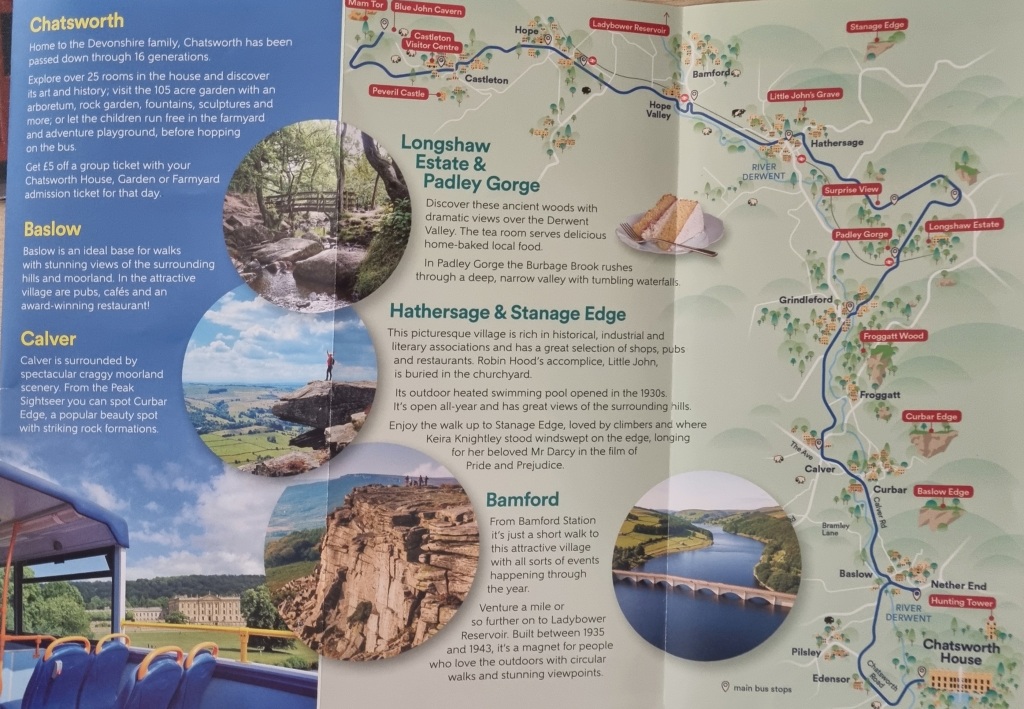
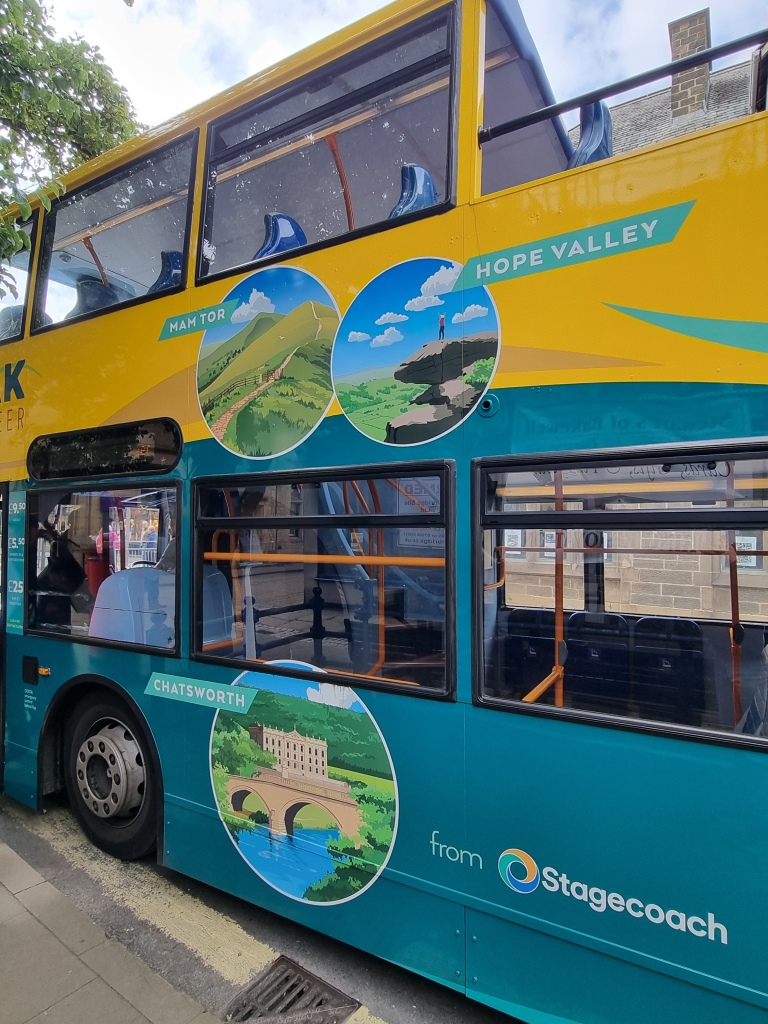
The gorgeous livery for Peak Sightseer is a real head-turner
You can find out more about the Peak Sightseer here:
https://www.stagecoachbus.com/promos-and-offers/yorkshire/peak-sightseer



















